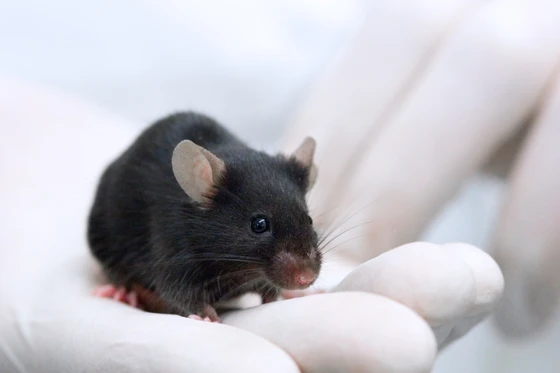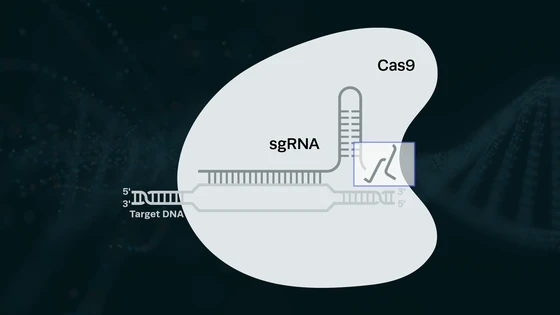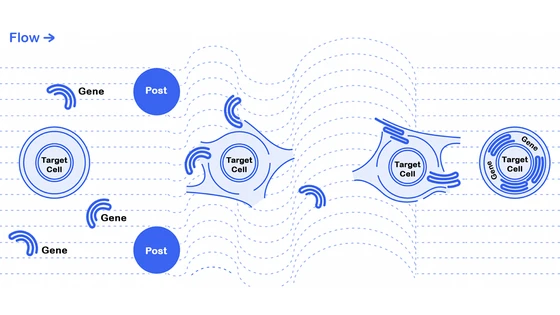The CRISPR field is moving fast! Don’t worry, we’ve got you covered. Check in every week for a quick summary of the biggest news and developments in genome engineering research so you can stay up to date with what’s happening in the world of CRISPR.
First up, we discuss the latest obesity research that involves CRISPRa at its core. The CRISPRa technology, which does not cut DNA, but amplifies the expression of specific genes, has been used to target two genes associated with obesity. The work has so far been conducted in mice only, but results are promising.
Next, we delve into the field of lung cancer research. Lung cancer is the leading cause of cancer-related deaths in the US and anti-cancer drugs are becoming less effective. Now, using CRISPR, researchers aim to restore sensitivity and improve survival rates.
Finally, we look at the fatal fungal infection that is worryingly understudied, and the advances that are being made possible, thanks to CRISPR.
CRISPRa Used to Cut Fat Without Cutting DNA

The genome of every human contains two copies of each gene, one from each parent. In around 660 cases though, a mutation in just one of those genes can lead to disease. Obesity is one of the resulting issues; mutations in a single copy of SIM1 or MC4R genes are the most commonly observed mutations in people that are severely obese. SIM1, or single-minded 1, codes for a transcription factor that is known to control food intake and hunger, and MC4R, or melanocortin 4 receptor, is a key regulatory of body weight.
Now, researchers from the University of California, San Francisco have come up with a way to hopefully restore SIM1 and MC4R functionality to such a degree that people with singular defective genes will no longer experience severe obesity.
The team, led by Dr. Nadav Ahituv, recently published a paper in Science that details their use of CRISPR-mediated activation (CRISPRa) of SIM1 and MC4R genes in mouse models, to reverse their obesity. CRISPRa is a variant of CRISPR wherein a dead Cas9 is fused with a transcriptional factor for upregulating the target gene. CRISPRa mice showed increased expression of SIM1 and MC4R genes, and were 30-40% lighter than mice that were not treated using CRISPRa.
"These results demonstrate that CRISPRa can be used to up the dosage of genes in diseases that result from a missing copy, providing a potential cure for certain forms of obesity as well as hundreds of other diseases," said Navneet Matharu, Ph.D., a researcher in Ahituv’s lab and lead author of the study, in a press release.
CRISPR Increases Lung Cancer Sensitivity to Anti-Cancer Drugs

The problem of drug resistance is one that has been at the forefront of the scientific world for years. Last week, we reported on the new research that is getting to grips with the underlying reasons for multi-drug resistance in bone cancer specifically, and this week we bring you more good news on the subject. Researchers based at the Gene Editing Institute of the Helen F. Graham Cancer Center and Research Institute, and the University of Delaware, both USA, have used CRISPR-Cas9 technology to make progress in alleviating drug resistance in patients with lung cancer.
Lung cancer is the leading cause of cancer-related deaths in the US; the disease kills more people every year than breast, prostate, and colon cancer combined. The problem of drug resistance in lung cancer is significant, with non-small cell lung cancer strains often intrinsically resistant to certain anti-cancer drugs, and small cell lung cancers acquiring resistance as treatment is used.
The team, led by Eric B Kmiec, Ph.D., used CRISPR to disable the NRF2 gene in lung cancer cells. NRF2 is a regulator of about 100-200 genes that all play a role in how a cell responds to stress. Previous research suggested NRF2 as a therapeutic target that may improve the way that cancer cells respond to existing chemotherapeutic agents, but this is the first piece of published research that confirms that theory. The research project found that mice with knocked-out NRF2 grew smaller tumors, with tumor growth stopped after just 16 days after cisplatin (a commonly used anti-cancer drug) was administered. The next step in this work will focus on delivery systems to allow CRISPR to safely target cancer in a clinical setting.
CRISPR Used to Induce Mutation in Potentially Deadly Fungus

Mucormycosis, also called zygomycosis, is a rare yet serious fungal infection that can be fatal. The infection is often left undiagnosed, increasing its potential for harm, and risk factors include poorly controlled debilitating diseases (e.g. diabetes), immunosuppression, and serious injuries resulting from trauma. Symptoms include fever, headache, visual problems, and swelling around the eye and sinus area, diffuse abdominal pain, shortness of breath, and changes to the patient’s mental state.
Despite these issues, the main cause of mucormycosis, the fungus Rhizopus delemar, remains understudied due to the lack of available genetic markers and limited genetic approaches.
Now, researchers from Louisiana, Texas, and China have teamed up to adapt the CRISPR-Cas9 system to induce single nucleotide deletions in the pyrF gene in two clinical strains of R. delemar, FGS-9544 and CDC-8219. The research project saw these two strains of R. delemar integrated with a Cas9 vector that allowed for genetic study of the fungus to be conducted for the first time. The research team stated that their “study provides a new research tool for investigating molecular pathogenesis mechanisms of R. delemar while also highlighting the utilization of CRISPR-Cas9 technology for generating specific mutants of Mucorales fungi.”
CRISPR 101 eBook
CRISPR has quickly become a standard laboratory tool for gene editing. As the adoption of CRISPR accelerates worldwide, up-to-date knowledge of the basics of CRISPR is essential for anyone in the field. From target identification studies to the recent breakthroughs in clinical trials, CRISPR is enabling scientists to unlock the power of the genome.
Download our CRISPR 101 eBook today to stay up to date on all your CRISPR basics and get the best results in your CRISPR experiments!








